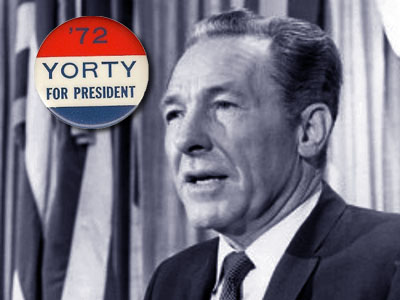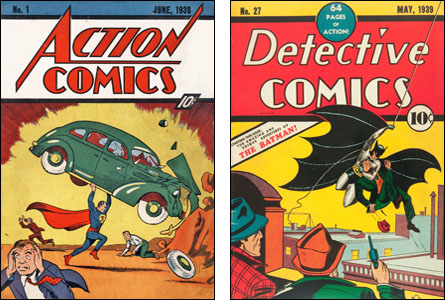
I mentioned Sam Yorty on my weblog and found myself engaged in e-mail discussions with others who recall the flamboyant (and largely inept) mayor of the City of Los Angeles. Yorty was mayor from 1961 to 1973 and darn near proved that L.A. could function just fine without anyone in that office. He spent most of his time in power either (a) travelling, ostensibly to promote trade with our fair city or (b) running for higher offices, among them the presidency.
The last of these was the more amazing since there was never any evidence that anyone anywhere wanted him to win any of these positions, except maybe for Angelenos who wished to be rid of the guy. Republican leaders didn't like him because even though the office of mayor is constitutionally non-partisan, Yorty had let it be known that he was a Democrat. Democratic leaders didn't like him because on every single issue that came along, you could count on him siding with the Republicans. His insistence that he was destined for bigger and better things almost seemed delusional. In fact, in '68 L.A. Times political cartoonist Paul Conrad began drawing Yorty in a Napoleon suit, being taken away to an insane asylum. This occurred when Yorty began claiming that he would soon be offered an important post in the cabinet of the newly-elected President Nixon. When he wasn't, Yorty hit Conrad and the Times with a lawsuit that, of course, went nowhere and made its plaintiff look even stupider.
How Sam Yorty got elected in the first place, I cannot say but I recall how he got re-elected in '69. In the primary that year, he came in second with 26 percent of the vote, trailing Councilman Tom Bradley who had 42. That looked like the end of Yorty but long before people talked about "playing the race card," he had one up his sleeve. Bradley was black, so the credo of the Yorty campaign became that if Tom Bradley got into office, he would take his marching orders directly from the Afro-American militants known as the Black Panthers. Yorty aides combed through photos of Bradley, found every one in which the Councilman's fist was clenched (including pictures of him jogging) and published them with captions that claimed Bradley was giving a covert "Black Power" signal to his true masters.
It was an enormously dirty, racist campaign. At one point, it was alleged that Yorty's backers had recruited and paid young black males to ride around key precincts in Cadillac convertibles with Bradley campaign signs on them. They were to play the radio at deafening levels and yell at old white ladies, "You'll be cleaning my house when Mayor Tom takes over!" I'm not sure they actually went that far, but they sure came close. It was an especially ludicrous line of attack if you recall how non-militant Tom Bradley turned out to be when he did finally did get into office and how groups like the Panthers all but disappeared. Yorty's racial fear campaign actually worked in '69 and he squeaked by. The next time around, the same line of attack got nowhere and Bradley easily won what turned out to be the first of five terms.
One of my favorite incidents in a lifetime of election-watching occurred during that election. Yorty, in a rare instance of doing something besides travelling and campaigning, had rammed through the City Council a number of proposals that enriched Occidental Petroleum. One was a controversial land swap deal where the city got some worthless acres and Occidental got some land which turned out to be quite rich in oil. During the campaign, Bradley charged that Yorty had a personal financial interest in Occidental and Yorty responded that Bradley was a lying fool and categorically denied any such interest. As it does more and more these days, the press stayed out of an election issue and didn't start looking into Bradley's charge until after Election Day when, of course, it meant so much less.
Turned out, Yorty himself might not have had a financial interest in Occidental but his wife did. The moment I loved came in one of Yorty's last press conferences when he was asked about this. He said something like, "I never denied that I had any financial interest in Occidental and anyone who says I did is a damn liar." One of the local news channels ran that footage, then ran a clip of Yorty saying, "Neither I nor anyone in my family has ever owned one share of Occidental Petroleum and anyone who says I have is a damn liar." I wish the media would do more of that kind of thing, and do it when it matters. (Later, I believe Yorty actually tried claiming that his wife had purchased more than a million dollars worth of petroleum stock without telling him…)
Sam Yorty died in 1998 without ever again holding public office. I have to say that I smell some of his tactics in the attempts to portray Cruz Bustamante as some sort of Chicano militant. Mr. Bustamante has not impressed me as anything more than the least offensive of a lot of bad choices I find on my ballot, but I think the attempts to tie him to extreme racial groups seem very strained. The same applies to any possible connection Mr. Schwarzenegger may have or have had to former Nazis. Come on. There are plenty of reasons not to vote for either of those men without resorting to that kind of nonsense.


